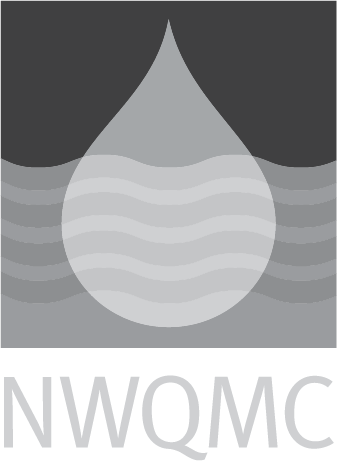USGS-NWQL: O-1124-94: Nitroaromatic compunds in water by HPLC
|
Official Method Name
|
Determination of dissolved nitroaromatic compounds by high-performance liquid chromatography |
|---|---|
|
Current Revision
| 1994 |
|
Media
|
WATER |
|
Instrumentation
|
High Performance Liquid Chromatography |
|
Method Subcategory
|
Organic |
|
Method Source
|
|
|
Citation
|
Lindley, C.E., Burkhardt, M.R.,and DeRussseau, S.N., 1994, Methods of analysis by the U.S. Geological Survey National Water Quality Laboratory -- Extraction of nitroaromatic compounds from water by polystyrene divinylbenzene cartridge and determination by high-performance liquid chromatography: U.S. Geological Survey Open-File Report 94-62 |
|
Brief Method Summary
|
A sample volume of 1 L is recommended for low-level (<1,000 ug/L) determinations. Smaller volumes can be used, with a consequent increase in the detection limit. All samples need to be filtered to remove suspended particulate material. Glass-fiber filters with a nominal 0.7-um pore diameter are required. Samples are submitted in 1-L amber-glass pesticide bottles sealed with a Teflon-lined cap. Sample extracts are prepared by conditioning an SPE cartridge with successive rinses of two cartridge volumes of acetonitrile and one of reagent-grade water. The sample is poured through the reservoir onto the cartridge. After the sample has passed through, any remaining sample water is expelled from the cartridge. The nitroaromatic components are desorbed from the cartridge with 2.0 mL of acetonitrile immediately after sample extraction to reduce loss of the more volatile nitroaromatic compounds from the cartridge through evaporation. The extract is brought to 4.0 mL with reagent-grade water. Approximately 2 mL of the extract is placed into an HPLC vial, capped, and saved for analysis. The remaining extract is not used. Extracts are analyzed using an HPLC equipped for reverse-phase chromatography. Analytes are detected by ultraviolet photodiode array. |
|
Scope and Application
|
This method is intended for the determination of explosive ingredients and selected degradation products in environmental water samples. The method has been used successfully for ground-water, surface-water, and lysimeter samples, and is expected to be applicable to most environmental water matrices [soil concentrations of explosive materials also have been measured using the soil extraction procedure described in USEPA Method 8330 in conjunction with the HPLC analytical conditions of this method]. |
|
Applicable Concentration Range
|
|
|
Interferences
|
Polystyrene divinylbenzene material has been shown to contain uncrosslinked prepolymer that can interfere with analyte integration. Thorough cleaning of polystyrene divinylbenzene is essential in USATHAMA Method UW32 and in other methods that use the bulk material. Compounds that demonstrate an affinity for the solid adsorbent of the cartridge also may cause interferences with the analytes of interest. These may include organic compounds having nonpolar, hydrophobic character that are introduced from cartridge conditioning or eluting solvents, or any naturally occurring or introduced organic compounds already present in the water sample. |
|
Quality Control Requirements
|
Obtain initial calibration data by using a new analytical column and freshly prepared calibration solutions. Calibrate the instrument by injecting working standard solutions of 2,000, 1,000, 200, and 50 ug/L. Analyze quality-control samples as part of every sample batch. The quality-control samples will constitute a minimum of 10 percent of the sample batch for laboratory blanks, reagent blanks, spiked samples, duplicate samples, continuing calibration standards, and matrix spikes. |
|
Sample Handling
|
Samples are submitted to laboratory in 1-L amber-glass pesticide bottles sealed with a Teflon-lined cap. No chemical preservative is used, but the sample must be chilled from the time of collection to the time of laboratory extraction. |
|
Maximum Holding Time
|
21 days |
|
Relative Cost
|
$201 to $400 |
|
Sample Preparation Methods
|




